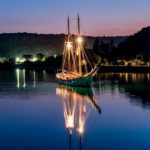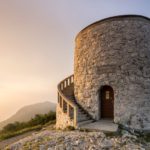Knin Fortress is the largest military fortress in Croatia and second-largest preserved military fortress in Europe. This fortress was shaped by the early Croatian cultural heritage in the ninth century and is found on the southern side of Mount Spas, which dominates Knin and its surroundings and offers breathtaking views on all sides.
Today’s appearance was given in the early 18th century when it was artificially cut off from the hill „Spas“ that resides on the northern side. It is divided into the upper, middle and lower city, which is interconnected by mobile bridges. The oldest is the upper town on the northern part of the fort, while the middle and lower town was built in the late Middle Ages.
Knin Fortress is a protected urban area and is registered in the Register of Cultural Heritage of the Republic of Croatia as a monument of zero categories, ie a monument of special national interest.
The Fortress takes up 123,143 m2. It is 470 m long, 110 m wide; its altitude is 342 m. It has been continuously restored from 1963. The area within the walls takes up 48,000 m2. The historical area around the Fortress takes up 105,000 m2.
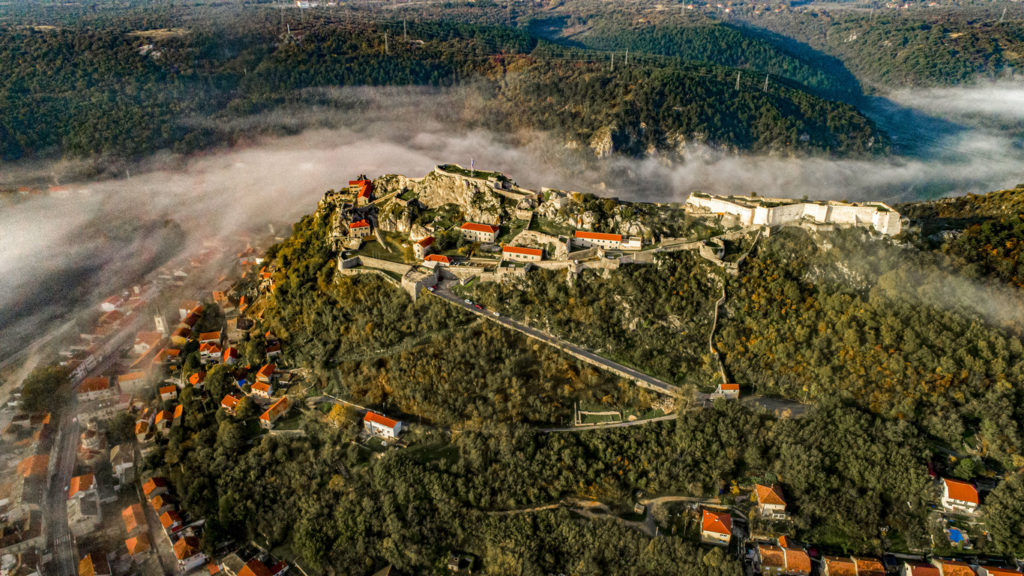
The Fortress is reached through Loredan’s gate, named after the first governor of Knin Antonio Loredan. The gate was built in the 18th century. There is a guardhouse over the passage, and beside it, on the south-east side, is a modest-sized cannon station. The gate is connected with a round tower protecting the access to the Fortress. The entrance to the Fortress used to be over the drawbridge, same as today. Above the entrance is a stone tablet with the figure of a winged lion, the symbol of St Marco, the patron of Venice.
On the right side from the entrance is the guardhouse erected in the 17th century (today a restaurant). On the left side is Pisani bastion. The church dedicated to St Barbara, the patroness of artillery, is at the beginning of the Fortress square. A small-sized building behind it used to house the furnaces.
Moving towards the north, passing the restaurant, one finds the cistern built between 1688 and 1711, and the crenelations were placed in 1818. The cistern used to be in the same place during the Turkish rule as well. Opposite the cistern, below the cliff is the building where the Fortress commander used to reside. For some time, this building used to house the Museum of Croatian Archaeological Monuments, and later on it was used as a council hall.
By the path, opposite the cistern, the bust of Fr Lujo Marun was erected on an elevated plateau. He established the Museum of Croatian Archaeological Monuments and founded the Croatian Society for Old Croatian Monuments.
Further north is a long building that can be reached by steps. Due to the sloping terrain, one part is elevated so the building consists of the basement with loop-holes and a ground-level room. At first, it was used for food storage, and before World War Two the Museum of Roman Monuments used to be situated here. It was redecorated and today it is used as a gallery for exhibitions. Opposite this building is a platform with gun-holes – cavalier Sveceze.
The entrance to the middle town is protected by walls and gate. Turning left from the gate the path leads to the Candia nova station and the gunpowder magazine. Opposite the entrance is an elongated building (today housing the Operation storm ’95 display) that used to store food, equipment and weaponry. Walking by this building one reaches the only guard-house, opposite which are the remains of another building that was used as weaponry storage for some time and it has double walls. Further on is round tower Topan. In front of it are the walls of the upper town, in historical documents mentioned as Tenin (by Constantine Porphyrogenitus in 10th century) and as Ićizar in Turkish times (1522-1688). Parts of the northern wall of the upper town date from the times of national rulers, then from the renovations of the Fortress, probably during the Tatar raids (in 1242).
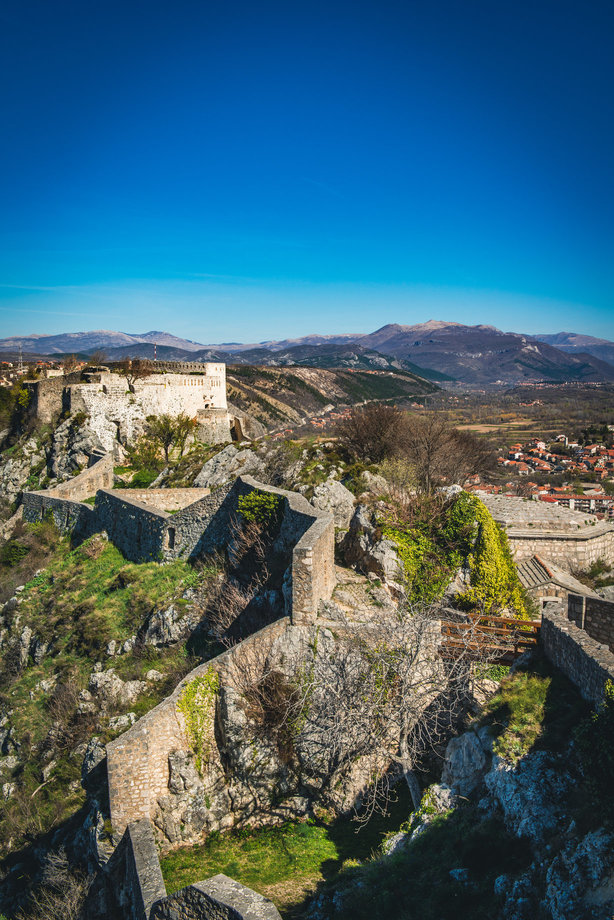
On the southern part of the wall, restoration works from Turkish times are visible, and the whole town was reconstructed during Venetian times. Walking by the outer wall one passes several gates defending the town from this side. There are numerous small openings in the outer wall – gun-holes. By the entrance to the upper town, a gun station is situated in a closed space where the path bifurcates towards castellan’s quarters, left and right, towards the lowest cannon station. The northern part of the fortress was completely redone during Venetian times according to Orazio Alberghetti’s drawings. The northern end consists of three cannon platforms, placed like terraces one above the other. When leaving this part of the Fortress one reaches a derelict building that used to serve as castellan’s quarters. There were a number of holes in the front by the wall that was used as latrines, and a cistern was further to the south-east.
Going on, there are two derelict buildings, probably store-rooms further south-east. The path to Pasqualio station is also in the south-east direction and turning left through the gate one leaves the upper town by a drawbridge. Fairly big openings that were used for cannons can be noticed while walking by the walls. On the left is a shelter that was dug in the rock by German soldiers during World War Two. One reaches the St Cecilia station that also has cannon openings. A roof of an oval room with rectangular access can be seen down on the left. This is gunpowder magazine, situated by the cliffs it partly uses a live rock as a wall. During the Homeland war, it used to be a prison for some time. Gunpowder magazine can be reached by going down the steps. Further on, there is a bridge that leads to another town on the Fortress. This is the location of the mediaeval Lab, called Korlat during Turkish times. Over the entrance preserved is the inscription stating that the Venetian Republic restored and enlarged the Fortress during the rule of Carlo Pisani, the governor-general of Dalmatia and Epirus in 1711.
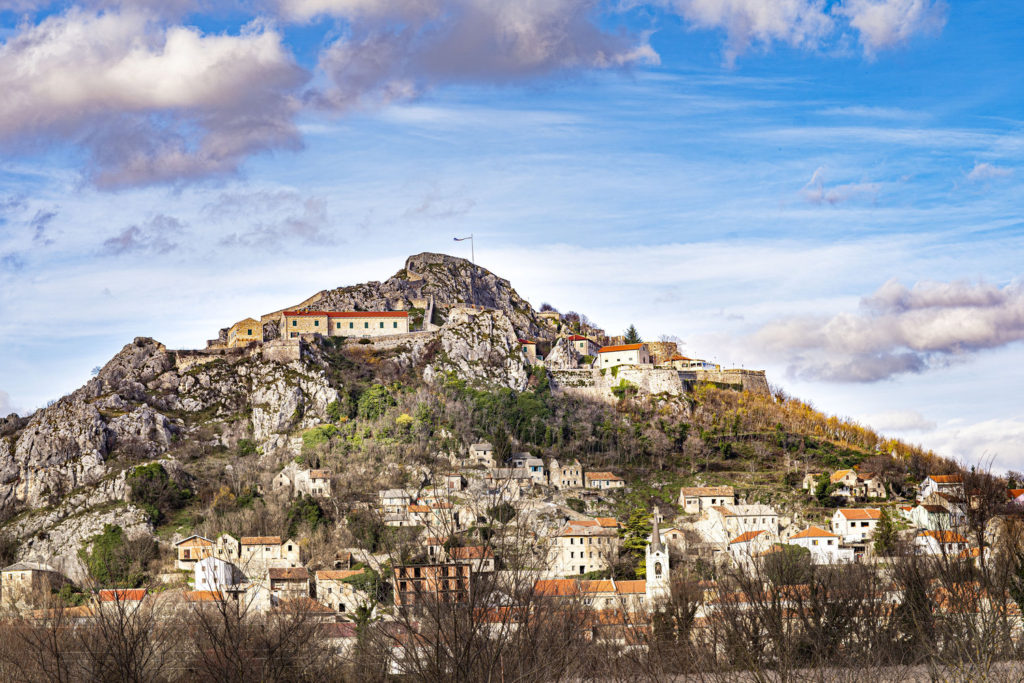
There is a column with Croatian flag and a plaque in memory of the first Croatian president on the plateau. Opposite from the entrance is a rather small door through which one leaves Bandjera. The steps lead to a smallish square station – semi-bastion Emo. It also has cannon-holes. Further down the steps is the lower town with Belvedere station. There are also a number of loop-holes in the wall here. The station was built from 1688. to 1713. Museum collections are situated in renovated buildings. They were built as barracks for accommodation of soldiers, and the southernmost building was a hospital. Towards the wall opposite the southernmost building is a cistern, built from 1688. to 1711. The southern part of the Fortress ends with a smallish tower. The Belvedere station is separated from the rest of the lower town by a gate and a bridge.
A closed breastwork is over the entrance. on the right towards the Fortress entrance is the administrative building of the Museum and summer stage and on the left the monument “beneath the cross”. South-east from the stage is Vendramin bastion, reinforced towards Pisani bastion and wall by the Museum building.
Author: www.tz-knin.hr

